|
|
|
Sort Order |
|
|
|
Items / Page
|
|
|
|
|
|
|
| Srl | Item |
| 1 |
ID:
106604


|
|
|
|
|
| Publication |
2011.
|
| Summary/Abstract |
This article sheds light on the identity and activities of foreign fighters who were active in Afghanistan and Pakistan between 2002 and 2006. This is done through analyzing a series of "martyr biographies"-short biographical stories of killed militants-issued by the Al Qaeda network in 2008. The study argues that there was little migration of foreign fighters from abroad to Afghanistan and Pakistan in this period, and practically no influx of fighters from Iraq. Al Qaeda's activities in the region were upheld by fighters who managed to flee from Afghanistan during and after the U.S.-led invasion in late 2001. After re-settling in the tribal areas of Pakistan, the main concern for these fighters was to fight a guerrilla war against U.S. and NATO troops in Afghanistan, not to plot terrorist attacks in Western countries. The study demonstrates that over time, the foreign fighters became more integrated in local communities. These early developments may help to explain why Al Qaeda continues to enjoy a strong sanctuary in the tribal areas of Pakistan today.
|
|
|
|
|
|
|
|
|
|
|
|
|
|
|
|
| 2 |
ID:
139995
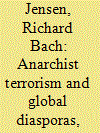

|
|
|
|
|
| Summary/Abstract |
During the quarter century before the First World War, anarchist terrorism was often blamed on the impact of anarchist agitators on naïve immigrants. This article seeks to investigate the truth of this claim, focusing particularly on Italian emigrants, but also looking at some examples of Spanish, French, and Russian emigrants. My conclusion is that, with a few exceptions, radicals emigrated, but emigration did not create radical terrorists. A particularly good example of this can be found by examining the large Italian emigration to Argentina. At most, the emigrant experience may have heightened a pre-existing radicalism or given more precise configuration to its violent expression.
|
|
|
|
|
|
|
|
|
|
|
|
|
|
|
|
| 3 |
ID:
147717
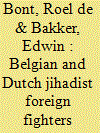

|
|
|
|
|
| Summary/Abstract |
In recent years, Belgium and the Netherlands have been confronted with relatively many citizens or residents who have traveled to Syria and Iraq to join and fight with jihadist groups — 388 Belgian and 220 Dutch as estimated by the respective authorities. This article provides an overview of the phenomenon of jihadist foreign fighters in the Low Countries, analyzing their characteristics, motivations, and roles in the war in Syria and Iraq. It compares the Belgian and Dutch cases, focusing on key aspects, such as age, sex, and geographical and socioeconomic background.
|
|
|
|
|
|
|
|
|
|
|
|
|
|
|
|
| 4 |
ID:
167160
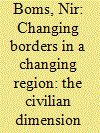

|
|
|
|
|
| Summary/Abstract |
The Syrian civil war – which has largely ended following bloody 8 years – serves as a prime case study of mechanisms which challenge border realities, as well as geography and demography, through engagement of manifold internal and external actors. This article discusses these processes and their implications by focusing on the Syro-Israeli borderland. It analyses the main actors and their motives, geography of interactions, as well as implications for humanitarian situation and security considerations. It is argued that while the dynamics in the Syro-Israeli borderland have several unique characteristics, they also point to a broader process of re-drawing borderlands and lines of influence in the Middle East region.
|
|
|
|
|
|
|
|
|
|
|
|
|
|
|
|
| 5 |
ID:
161594
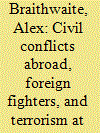

|
|
|
|
|
| Summary/Abstract |
Terrorist attacks in Brussels (May 2014) and Paris (January and November 2015) highlight the threat related to the arrival of foreign fighters (FFs) from civil wars elsewhere. We develop an argument suggesting that terrorism at home is systematically affected by the exit of the so-called FFs out of civil wars abroad. We contend that foreign civil conflicts ending in success for rebel groups can result in a surplus of well-trained FFs, increasing the risk of terrorism at home. By contrast, when rebel groups are defeated in foreign civil conflicts, we anticipate a restriction in the flow of FFs, which reduces the likelihood of terrorism at home. Empirical analyses on most countries for the years 1970 to 2006 support these hypotheses. Our tests also demonstrate that the flow of FFs is associated with the creation of new terrorism campaigns rather than the exacerbation of existing operations.
|
|
|
|
|
|
|
|
|
|
|
|
|
|
|
|
| 6 |
ID:
190899
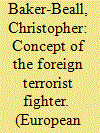

|
|
|
|
|
| Summary/Abstract |
The conflicts in Iraq and Syria have led to concerns in the West over ‘foreign fighters’. Although states are anxious about the role these individuals play in the conflicts they join, their primary concern relates to the perceived ‘terrorist’ threat they pose on their return. This fear has led to an evolution in the international policymaking arena, with foreign fighters now often referred to as ‘foreign terrorist fighters’ (FTFs). A Critical Theory-inspired immanent critique is offered to highlight various problems that exist with the FTF term and to argue policymakers should resist its use. The article demonstrates the importance of language by showing how the invocation of the FTF threat has strengthened the ongoing development of globally coordinated counterterrorism action. Specifically, it argues UN Security Council Resolution 2178, agreed in 2014, generates a legal obligation upon UN member states to implement new counterterrorism laws at national level to combat the perceived threat from FTFs. The article highlights the negative effect these laws have on human rights. It is argued institutions like the UN need to ensure new counterterrorism legal instruments are built from a human rights rather than security-first perspective if commitments to human rights in transnational counterterrorism are to be fully realised.
|
|
|
|
|
|
|
|
|
|
|
|
|
|
|
|
| 7 |
ID:
168855
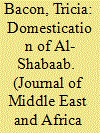

|
|
|
|
|
| Summary/Abstract |
How much influence did foreign fighters exert over al-Shabaab’s insurgency in Somalia? An emerging policy consensus is that foreign fighters exert decisive influence on insurgencies, even affecting conflict duration, intensity, and outcomes. Nevertheless this study argues that foreign combatants in Somalia have exerted a more limited influence than this consensus suggests, though this influence has varied over time. Foreign fighters were present within al-Shabaab from its inception, and remain a part of the group over ten years later. Over this period, non-Somali combatants enjoyed the most influence during the insurgency against Ethiopian forces between 2007 and 2008, when al-Shabaab was a young organization facing a superior enemy. Over time, foreign fighters’ influence within the insurgency in Somalia diminished as al-Shabaab became “domesticated,” i.e. gained controlled of territory and began to govern. This study examines four periods in recent Somali history: the Islamic Court Union’s rise pre-2006, the Ethiopian invasion from 2007 to 2008, al-Shabaab’s territorial conquests from 2009 to 2010, and the internal divisions and purge from 2011 to 2013. This article concludes with a word of caution on the growing perceptions that foreign fighters shape insurgencies and that their involvement significantly helps or hurts local opposition movements. In the case of al-Shabaab’s insurgency in Somalia, transnational insurgents shaped external actors’ calculus in ways that have affected the conflict’s duration, intensity, and even outcomes, but they did not have a commensurate impact within the insurgency.
|
|
|
|
|
|
|
|
|
|
|
|
|
|
|
|
| 8 |
ID:
168900
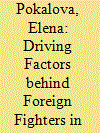

|
|
|
|
|
| Summary/Abstract |
With the rise of the self-proclaimed Islamic State of Iraq and Syria (ISIS), the phenomenon of foreign fighters became a significant security concern. Governments around the world have become preoccupied with the possibility of their citizens leaving for combat zones and then coming back with training and experience. While previously foreign fighters participated in such conflicts as Afghanistan, Bosnia, or Chechnya, today ISIS has attracted record numbers of individuals from various backgrounds. This article examines factors that might be connected with the outflow of foreign fighters to Syria and Iraq. The analysis is based on 190 countries with 103 of them serving as countries of origin for 33,815 foreign fighters. Negative binomial regression is used to evaluate the connection of political, economic, demographic, and social factors to numbers of foreign fighters. The findings indicate that more foreign fighters come from countries with higher Human Development Index levels, unemployment rates, percentages of youth, population size, percentages of Muslim population, emigration levels, Internet penetration, and the presence of Al Qaeda cells. However, the findings further indicate that the effect of these variables is not uniform across majority Muslim and majority non-Muslim countries.
|
|
|
|
|
|
|
|
|
|
|
|
|
|
|
|
| 9 |
ID:
150849
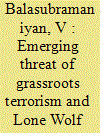

|
|
|
| 10 |
ID:
172200
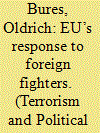

|
|
|
|
|
| Summary/Abstract |
The conflicts in Syria and Iraq have put foreign fighters—individuals travelling from other countries to engage in these conflicts—high on the security agenda at both the national and EU level. Drawing on theoretical arguments previously advanced to explain the haphazard evolution of the EU’s counterterrorism efforts after September 11, 2011, this articles discusses the emergence and persistence of key challenges that have hampered the EU response to security threats posed by 5,000 European foreign fighters between 2013 and early 2017. These include the absence of a common EU-level definition; the differences regarding the scope and perceptions of the threats posed to individual Member States; the lack of consensus on root causes of terrorism and radicalization; and the differences among Member States when it comes to addressing the difficulties of criminal prosecution of foreign fighters.
|
|
|
|
|
|
|
|
|
|
|
|
|
|
|
|
| 11 |
ID:
142394
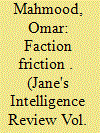

|
|
|
| 12 |
ID:
181085


|
|
|
|
|
| Summary/Abstract |
In the vast literature on terrorism the choice of weapons has received relatively limited attention, despite the importance and visibility of this topic. Building on the literature on innovation in terrorism, the article first proposes a multi-level analytical framework that helps study terrorist weapon selection. It then investigates the use of weapons in jihadist attacks in Europe from 2014, with the rise of the so-called Islamic State, until 2020, based on an original database. The empirical analysis shows that the two traditional types of weapon of modern terrorism, firearms and explosives, were largely replaced by more primitive tools like melee weapons. In fact, in recent years jihadist terrorists in Europe have become less technologically advanced. Based on the original analytical framework, the article examines the reasons of this evolution, paying special attention to the use of the most common type of weapon in the database, bladed weapons, and the most lethal type, firearms.
|
|
|
|
|
|
|
|
|
|
|
|
|
|
|
|
| 13 |
ID:
186966
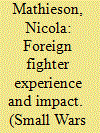

|
|
|
|
|
| Summary/Abstract |
This paper examines the relationship between prior conflict experience and the impact of foreign fighters on armed groups. This paper addresses the findings in existing research that describes foreign fighters as both assets and liabilities by disaggregating foreign fighters into first-conflict foreign fighters and veteran foreign fighters. While prior experience determines the potential impact of foreign fighters, I introduce the concept of foreign fighter integration to understand how this experience is utilized or leveraged by armed groups. The theory-building framework helps explain why we see certain groups leverage foreign fighters in ways that shape their repertoires of violence, tactics, or even ideology, while, in other instances, the influence of foreign fighters appears to be limited – with any consequent effects restricted to the small factions into which foreign fighters have been assigned. Using this theoretical framework of experience and integration, I re-examine in the cases Somalia and Bosnia and Herzegovina to demonstrate how and where foreign fighters impact armed groups.
|
|
|
|
|
|
|
|
|
|
|
|
|
|
|
|
| 14 |
ID:
103422
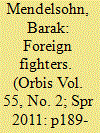

|
|
|
|
|
| Publication |
2011.
|
| Summary/Abstract |
Beginning with a historical perspective on foreign fighters, this article then seeks to clarify ambiguities and biases that shape how we often analyze the foreign fighter phenomenon. The central focus is then on the evolving trends and activities of the movement. A new generation of fighters has emerged who are comfortable as terrorists, recruiters, trainers and media propagandist, among other specialties. The author concludes by assessing the significance of the problem today.
|
|
|
|
|
|
|
|
|
|
|
|
|
|
|
|
| 15 |
ID:
129516


|
|
|
| 16 |
ID:
138894
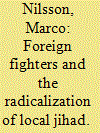

|
|
|
|
|
| Summary/Abstract |
Modern jihadism has experienced two distinct crises. The present study analyzes recent developments in jihadism, which can be seen in connection with efforts to solve the latest recruitment crisis of global jihad, and is based on comparative interviews with eight Swedish jihadists defined as foreign fighters. The study identifies three new trends evident in the interviews comparing jihadists active in Syria with those who fought in Afghanistan and Bosnia: socialization to global jihad, normalization of jihad, and an increasing use of the doctrine of takfir (i.e., ex-communication). This can be described as indicating the radicalization of local jihad, as the territorially based jihad, championed by Abdullah Azzam, and the global jihad of Osama bin Laden meet in the territorial realities of Syria and Iraq.
|
|
|
|
|
|
|
|
|
|
|
|
|
|
|
|
| 17 |
ID:
158226
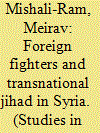

|
|
|
|
|
| Summary/Abstract |
Foreign fighters arrive in Syria from across the Muslim world, yet the configuration of their countries of origin remains a puzzle. Examining alternative explanations for joining transnational jihad, the article draws insights from the cases of Tunisia and Saudi Arabia, two major countries of foreign fighters' origin, compared with Egypt, from where limited figures of volunteers have joined the Syrian war. The article shows that the sources of volunteering fighters may be well understood in combined terms of religious sentiments and national politics. Foreign fighters come largely from Muslim countries where restrained state–Islamists relations channel Islamic grievances to transnational arenas.
|
|
|
|
|
|
|
|
|
|
|
|
|
|
|
|
| 18 |
ID:
087761
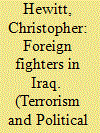

|
|
|
|
|
| Summary/Abstract |
Statistics on the national origin of almost one thousand killed and captured foreign fighters in Iraq reveal noticeable differences among Muslim majority countries in their jihadism rate (number of fighters/million population). These cross-national differences are used to test different theories as to the causes of Islamist extremism. The findings do not support those theories which see the cause of jihadism in the political and economic failures of Muslim societies, since the foreign fighters come from the more developed countries. The foreign fighters also come from the more religious societies, and from those societies "occupied" by U.S. or Israeli military forces.
|
|
|
|
|
|
|
|
|
|
|
|
|
|
|
|
| 19 |
ID:
188070
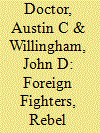

|
|
|
|
|
| Summary/Abstract |
Recent studies find that the presence of foreign fighters in a rebel organization may increase levels of anti-civilian violence in civil war. But why? Evidence from some cases indicates that foreign fighters may be used intentionally by local rebel commanders to carry out abusive operations against noncombatants. Other cases, however, suggest that foreign fighters possess greater capacity for independent agency in war, stepping outside the chain of command to inflict harm against local noncombatants. We argue that variation in a rebel group’s command structure—specifically, their degree of centralization—offers a point of leverage with which to adjudicate between the generalizability of these competing explanations. We investigate this issue with an analysis of sixty-nine rebel groups active between 1989 and 2015. We find that the effect of foreign fighters on civilian targeting is conditional: foreign fighters are associated with greater levels of anti-civilian violence only when active in groups with centralized command structures. This study contributes to the nascent literature on foreign fighters, offering insight into how these actors step into the command structures of rebel organizations. This study also demonstrates that the abuse of civilians in conflict can be explained effectively based on the characteristics of armed parties.
|
|
|
|
|
|
|
|
|
|
|
|
|
|
|
|
| 20 |
ID:
103425
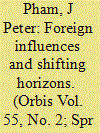

|
|
|
|
|
|
|
|